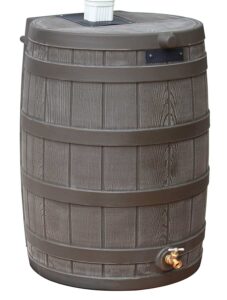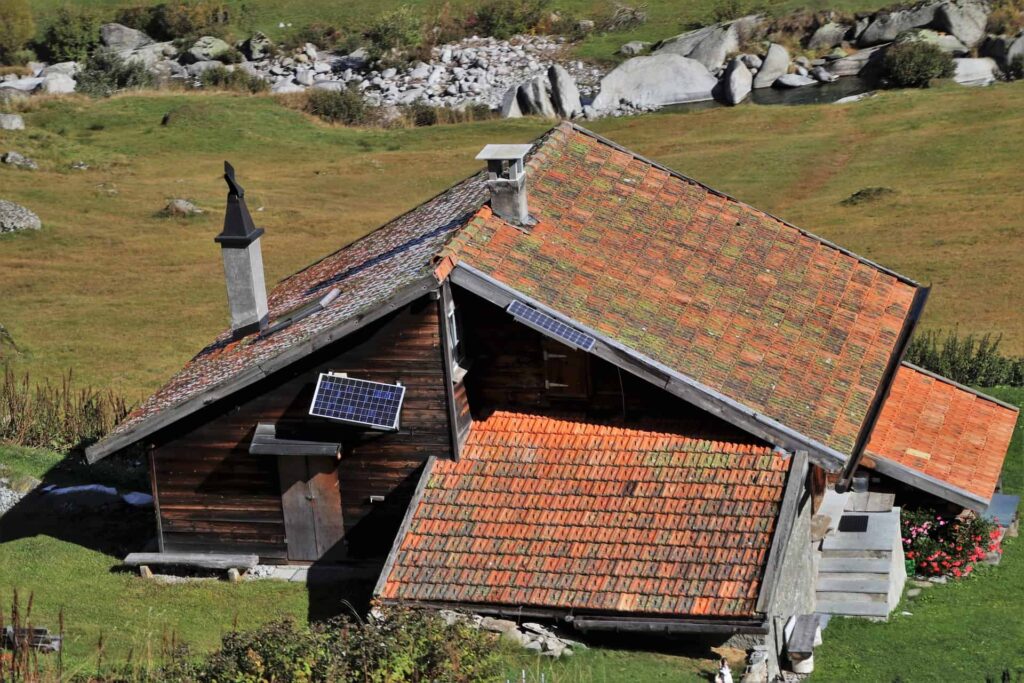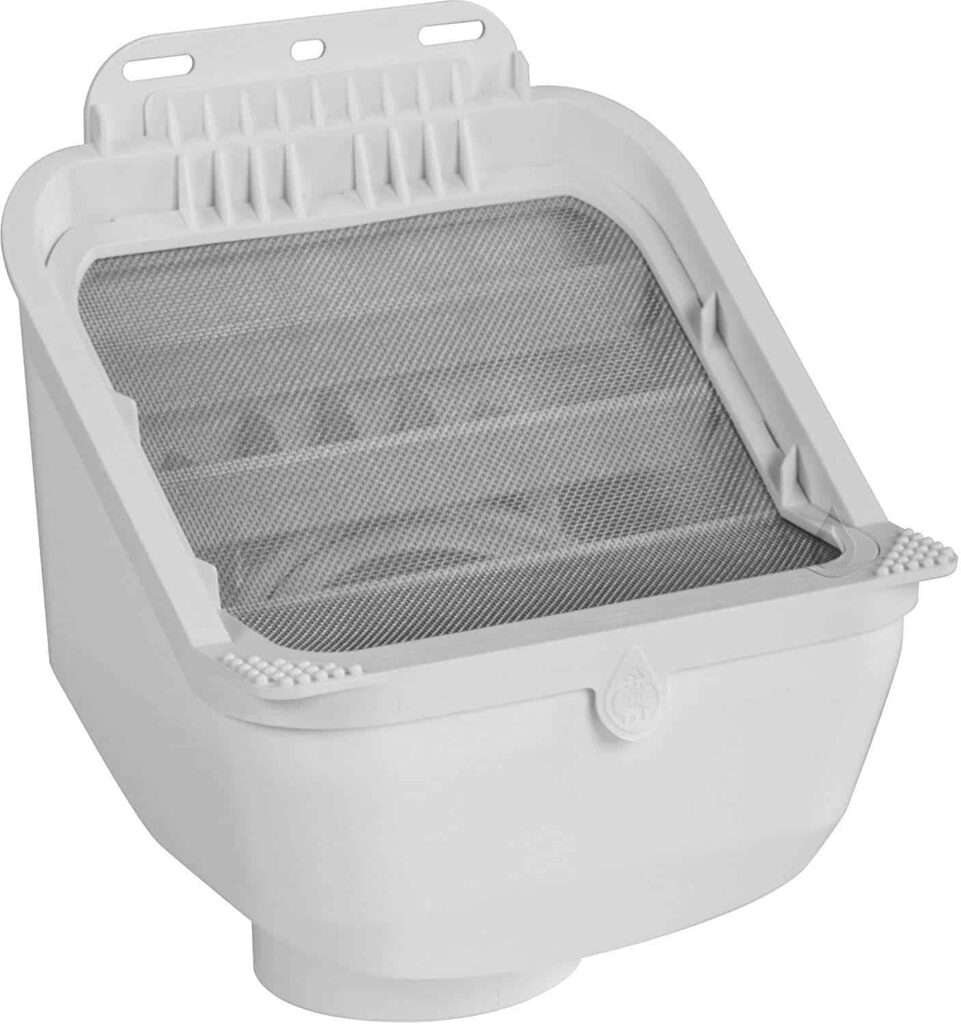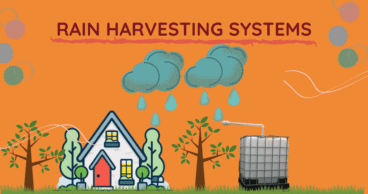Looking to live off the grid and want to make sure you have a proper rainwater harvesting system set up?
Speaking from personal experience, if you live in an area that gets good rainfall, setting up a proper rainwater harvesting system is a lifesaver.
Rainwater harvesting systems allow you to capture, store, and use rainwater for all the things most people rely on city water.
But how can you make sure you’re getting the most out of your rain supply?
Today I’ll go over the basics of rainwater harvesting and explore the three most common types of advanced rainwater harvesting systems.
After you finish reading this, you will have a great idea of what type of rainwater harvesting system is best for your needs, and have a great action plan for getting started.
So let’s begin.
What Does a Rainwater Harvesting System Do?
A rainwater harvesting system is any setup designed to capture and use rainwater. They can be as simple as a bucket you put underneath a gutter or as complex as a capture, filtration, and pump system.

When most people refer to a rainwater harvesting system, they mean a fully-realized system that combines capture, holding tanks, filtration systems, and pressurized water provided via pumps or a gravity tank.
It collects rainwater from your roof, routes it into a holding tank, then uses a pump to move water through a treatment system into your home’s pipes. They can be used as either your primary water source or as a way to supplement well water or even city water.
How to Make a Rainwater Harvesting System?
Depending on what type of rainwater harvesting you wish to do, you can use several different systems. The two types are passive and active, both of which I’ll cover in greater detail below.
Passive systems don’t require pumps, plumbing, or much of anything other than a surface for the rain to fall on and a drain to direct it into a container or collection point. Many traditional homeowners looking to conserve water use a version of this setup in their homes to collect the water that comes off their roof for use in their garden or lawn.
Active systems are what I’ll cover most today. These are much more advanced and include a rainwater catchment system, unfiltered/filtered storage tanks, pumps, and comprehensive water purification systems.
When properly optimized, they’ll give you similar functionality to traditional pressurized plumbing.
Rain Harvesting Basics
Rainwater harvesting is a great way to gather primary or supplementary water while living off the grid, but there are a few basic considerations before you get started. These mainly come down to the amount of water you can harvest, the legality of rainwater harvesting, and things that can affect how well suited your home is for rainwater harvesting.
Will Rainwater Harvesting Work for Me?
The most significant factor in whether or not rainwater harvesting works for you is how much rainfall you get on average. After that, you need to consider the size of your roof to know just how much water you can expect to capture each year.
The U.S. Department of Energy has an excellent resource for average rainfall available. It gives you a quick overview of the best areas for rainfall in the country and can help you see at a glance whether your area is one that offers good rainwater harvesting potential.
Once you know how much rainfall you can expect, you can calculate the average rainwater you’ll be capable of capturing. One inch of rainfall provides .623 gallons of water per square foot. To find out how much water your roof can generate, multiple the square footage by the rainfall average and then by .623.
As an example:
800 sq ft roof X 20 inches of rainfall X .623 = 9,968 gallons average per year.
Is Rainwater Harvesting Legal?
The legality of rainwater harvesting depends on where you live. Federally there are no restrictions on personal capture of rainwater, but many states have regulations that affect your ability to use rainwater.
The U.S. Department of Energy has another great resource that gives you a state-by-state breakdown of the rules and regulations relating to the capture and use of rainwater.

Physical Features Of Your Rainwater System
By far, the most critical physical consideration is the type of roof you have. The best roof types for capturing rainwater are metal and tile roofs, with asphalt unsuited for it.
With asphalt shingles, there’s a real risk that chemicals will leach into the water collected, rendering it unusable for virtually any task.
Other than that, the shape, configuration, and even slant of your roof can affect how efficiently rainwater collection will work. Simple peaked roofs with defined gutters are the easiest to use, while something like a multi-peak roof or especially an A-frame can be quite challenging.

Water Treatment
How much you’ll need to treat your rainwater depends on how you plan to use it. If you want a good water source for use in the garden or for livestock, all you need is a basic pre-filter to remove sediment and other bits of debris.

If you want to run your off-grid home entirely on rainwater you’ll need to both pre-filter it for sediment before it goes into the tank and run it through a more precise and powerful post-filter to remove other contaminants and potential pathogens. You can do this using either an in-line system for pumped systems or something like a Big Berkey or other water filtration system.
Different Types of Rainwater Harvesting Systems
Direct Pumped Rainwater Harvesting System
Direct pumped rainwater harvesting systems use either a submersible or suction style pump. The pump draws water directly from the storage tank and sends it throughout your home on-demand.
Depending on the system you’ve built, it can be either clean non-potable water or fully potable treated water. Direct pumped systems work best when you’re using rainwater as a supplement to well water or grid-connected water, as the pump will stop working once the water drops below a certain level within the tank.
Direct pumped rainwater harvesting systems work well under just about any conditions, take up relatively small amounts of space, and provide a seamless user experience comparable to grid water.
Indirect Gravity Rainwater Harvesting System
Indirect gravity rainwater harvesting systems rely on the force of gravity combined with a powered pump. A gravity tank is placed at the highest point in your home, or even up a scaffolding or similar platform, and fed from your main rainwater storage tank via a pump.
It works on much the same principle as pressurized well tanks, with the added oomph gravity provides. A great thing about this system is that it allows you to run your powered pump when your solar system is producing at its peak to fill it then use your stored water without drawing more power.
The downside to this system is that you need at minimum two separate storage tanks. If you’ve got the space, it can be a great power-saving feature, but if not a standard direct pumped system may be a better idea.
Indirect Pumped
An indirect pumped system can be considered a fusion of the other two main types. It has the second tank of a gravity-fed system but relies on a secondary pump to provide pressure.
This has the benefit of allowing you to use a powerful but imprecise pump for your primary storage pump and a smaller but more precise pump to provide just the right pressure for your house systems.
Another benefit of relying on a pump rather than gravity is that the second tank can be placed anywhere in your home. You don’t have to put it at the highest point of the house to benefit from gravity.
DIY Rainwater Collection System
Installing pumps, pipes, and tanks not what you’re looking for? There are plenty of ways you can setup a more basic rainwater collection system using nothing more than your roof, a gutter, and a barrel.
By far the easiest is just that, a rain barrel positioned under a drainpipe that fills up with rainwater. It’s a workable system, especially if you just want water for your garden or animals, but does lack the convenience of the systems we covered above.
When paired with a high-quality water filter, you can even use such a system as your primary water source for drinking, cooking, and bathing.
Here’s a great video from the folks over at Great Escape Farms that shows how a basic DIY rainwater system works:
Final Thoughts
Rainwater harvesting systems have come a long way since the days of rain barrels under gutters. Now you can get a system that provides equal water pressure and quality to city treated water anywhere there’s enough rain for your needs.
The three main types all function in pretty much the same way, with small differences that can affect what system will work best for your needs.




